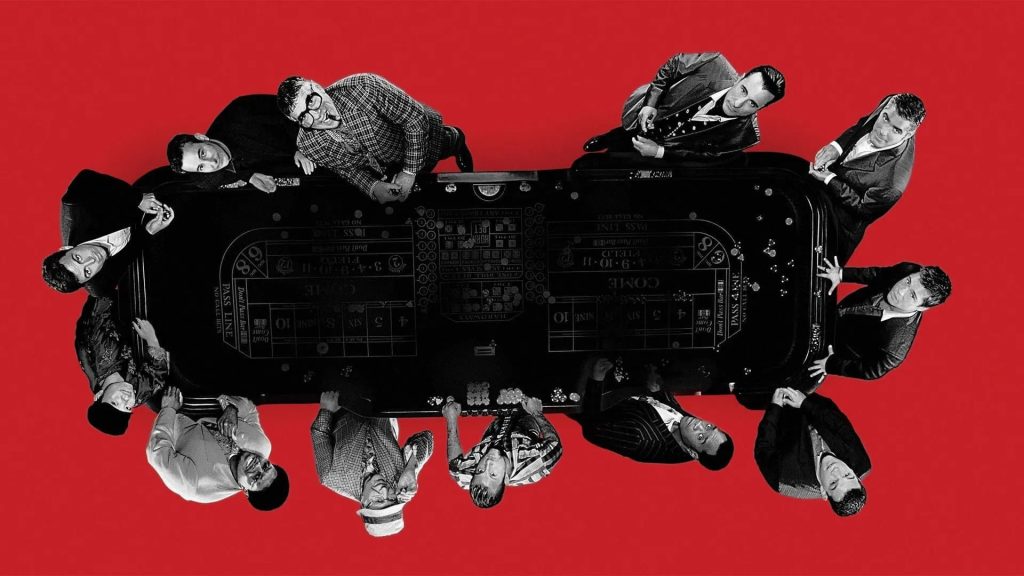Looking Back at What Made the Ocean’s Movie Trilogy Such a Success and a Classic in Today’s Age

More than two decades after the release of Ocean’s Eleven, the film continues to hold a prominent place in the landscape of Hollywood heist cinema. The trilogy, comprising Ocean’s Eleven (2001), Ocean’s Twelve (2004) and Ocean’s Thirteen (2007), blends charm, style and cleverness into a franchise that remains relevant today.
The Ocean’s films did more than just tell a story of slick con artists – they established a cinematic formula that many others have attempted to replicate. Here's why this trilogy became such a cultural touchstone and still feels fresh years after its debut.
A-Star Ensemble That Redefined Cool
One of the trilogy’s most defining features is its all-star cast. Ocean’s Eleven brought together some of the most charismatic actors of the early 2000s such as George Clooney, Brad Pitt, Matt Damon, Julia Roberts, Don Cheadle and Andy García. This wasn’t just star power for the sake of name recognition. Each actor inhabited their role with confidence, chemistry and ease, contributing to a team dynamic that felt authentic.
Rather than one central figure dominating the story, the films balance screen time across the ensemble, letting each character shine. Danny Ocean may have been the mastermind but Rusty’s effortless cool, Linus’s anxious energy and Basher’s eccentricity all brought texture to the group. The camaraderie and witty banter gave the audience not only a team to root for but a reason to enjoy spending time in their company.
Soderbergh’s Signature Style and Direction
Director Steven Soderbergh deserves credit for the trilogy’s signature tone – a stylish mix of sharp editing, rich cinematography and inventive visual storytelling. With his background in indie film, Soderbergh brought a unique visual flair to mainstream Hollywood. He used split screens, rapid cuts and saturated colour palettes to give each film its own distinct rhythm.
What set Soderbergh apart was not just his aesthetic but his ability to weave style into substance. He layered visual cues that rewarded attentive viewers, allowing subtext and character dynamics to emerge without explicit dialogue. His cinematography often mirrored the sophistication of the heists themselves – sleek, precise and intricately designed. The camera became a silent co-conspirator in the story, moving with intent and revealing details only when necessary.
Soderbergh also managed to keep the narrative brisk and tightly wound. In a genre where the mechanics of the heist can easily bog down pacing and where the niche of a casino theme is particular, the Ocean’s trilogy never felt weighed down by logistics. Instead, it danced through complex setups and twists with ease, ensuring the audience remained entertained, and some might have even gone so far as to hop onto one of the recommended UK casino sites after watching this casino-themed movie.
His direction also emphasised restraint. Despite the high-stakes nature of the plots, the tone remained light and confident. There’s very little violence and no over-the-top explosions, elements typically associated with crime films. This restraint helped the trilogy maintain a sophisticated and polished edge. It’s a testament to Soderbergh’s vision that the films feel just as fresh today, proving that style and substance don’t have to be at odds; they can amplify one another when handled with precision.
A Blueprint for Modern Heist Films
The structure of Ocean’s Eleven became a template for modern ensemble heist films. Assemble the team, outline the plan, reveal complications and end with a twist. The genius lay in the film’s ability to misdirect both the target and the viewer, revealing hidden layers only after the job is done.
You likely remember the sense of satisfaction when the twist unfolds, when it becomes clear that the crew has been one step ahead the entire time. It’s storytelling as sleight of hand, a magician’s trick pulled off with cinematic finesse.
This approach influenced numerous other films and TV series in the heist or con genre, from Now You See Me to Money Heist. The emphasis on charm, brains over brawn, and ensemble chemistry owes much to Ocean’s Eleven.
Humour and Wit That Aged Gracefully
Unlike many early-2000s comedies or action films, the humour in the Ocean’s trilogy hasn’t aged poorly. The jokes are rooted in character interactions, timing and subtlety rather than broad slapstick or crass gags. Rusty’s deadpan lines, Danny’s smug grin and Saul’s dry sarcasm still land because they’re tied to character rather than trends.
Even the meta-humour, like Julia Roberts’ character pretending to be 'Julia Roberts' in Ocean’s Twelve feels ahead of its time. That scene, often criticised upon release, now looks like a precursor to the kind of self-aware comedy seen in today’s blockbusters.
The writing, particularly in the first film, walks a fine line between clever and self-indulgent. But more often than not, it lands firmly in the realm of charismatic, making repeat viewings just as enjoyable as the first.
A Franchise That Knew When to Stop
One key reason the trilogy remains respected is that it knew when to bow out. After Ocean’s Thirteen, the story concluded naturally. Danny and his crew had settled their scores and the audience felt closure. There was no forced cliffhanger, no setting up a cinematic universe, and no sequel fatigue.
This self-contained quality helps the films age well. You can watch the trilogy today without needing additional context or cross-referencing spin-offs (though Ocean’s 8 exists, it doesn’t interfere with the original arc). This restraint is rare in modern franchises, which often stretch themselves thin chasing one more sequel.
By ending the story before the magic wore off, the trilogy preserved its own legacy. It left fans wanting more but appreciating what was already there.
Cultural Relevance in the Streaming Era
In today’s age of streaming, where attention spans are short and content libraries vast, the Ocean’s trilogy offers something many modern films lack: rewatchability. You can return to Ocean’s Eleven years later and still find it slick, funny and engaging. There’s comfort in the familiarity of the team’s banter, the elegance of the heist, and the satisfying final twist.
Streaming has also introduced the films to new audiences who might have missed them in theatres. Younger viewers, accustomed to fast pacing and quippy dialogue, find the trilogy surprisingly modern. The lack of excessive CGI and the emphasis on character interaction make the movies feel timeless rather than dated.
The trilogy also continues to influence pop culture. From fashion blogs citing Rusty Ryan’s suits as peak menswear to memes quoting classic lines, the Ocean’s films live on in digital form, gaining new life with every shared clip or gif.
A Classic If You Ever Saw One
Looking back, the success of the Ocean’s trilogy wasn’t built on any one element. It was the seamless blend of stylish direction, star-studded performances, intelligent writing and sharp humour. These films understood the value of charm over spectacle and story over excess. In an era increasingly dominated by big-budget franchises and cinematic universes, the Ocean’s trilogy stands as a reminder that sometimes, cool confidence and a well-executed plan are all you need.
Whether you’re watching for the first time or revisiting an old favourite, the trilogy offers a masterclass in genre filmmaking – clever, classy and effortlessly entertaining. And in today’s fast-changing media landscape, that kind of timelessness is no small feat, which is why these movies are seen as classics now.

